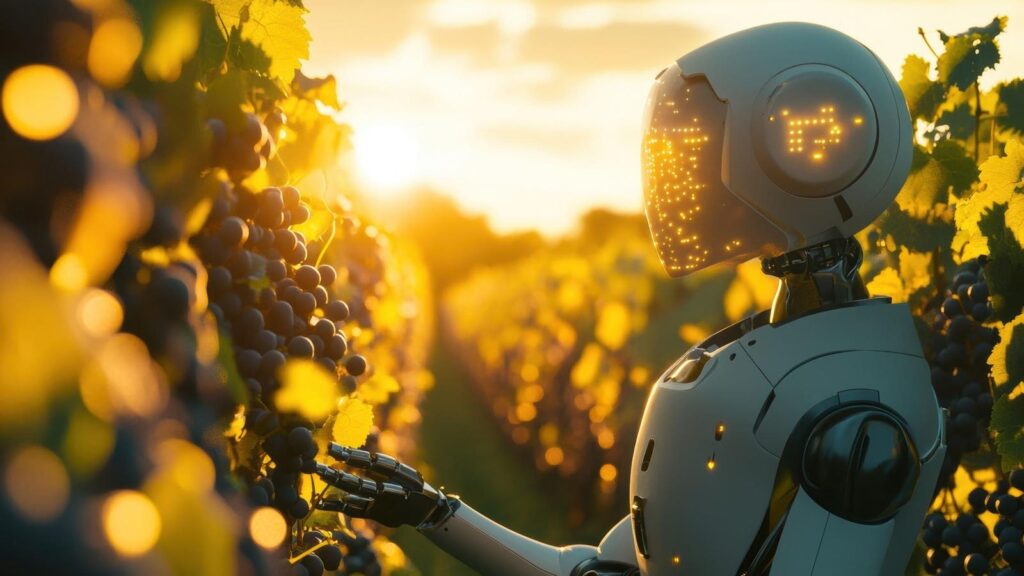The Future of Winemaking: How AI is Transforming Chateau Montelena
When you think of winemaking, the image of sun-soaked vineyards, meticulous harvests, and traditional methods come to mind. However, a significant shift is underway, particularly at Chateau Montelena, one of Napa Valley’s historic wineries known for elevating American wines on the global stage. Here, innovative technology is reshaping the art of crafting premium wines, blending tradition with cutting-edge artificial intelligence (AI).
The Dawn of AI in Winemaking
“AI in the wine industry is still in its infancy,” says Matt Crafton, the winemaker at Chateau Montelena. But despite being in its early stages, the potential for AI applications is showing transformative promise across every facet of wine production, from the vineyard to the cellar.
Smart Monitoring in the Vineyard
At Chateau Montelena, the journey of AI begins with smart monitoring systems. By leveraging technology adapted from facial recognition, vineyard managers can quickly assess vine health by simply strolling through the fields with their smartphones. Instead of relying on monotonous manual checks, they upload images of the vines to a central system. This smart method enables them to analyze changes in leaf angles due to sun exposure, helping identify water stress levels.
Think about it—if you could get a nudge on your phone every time one of your plants needed attention, you’d likely send more love their way. That’s essentially what Crafton describes: “We’re getting these little nudges saying, ‘Hey, check out row 45, about eight vines in,’” allowing for timely interventions that previously required countless hours of labor.
Additionally, the winery employs aerial imaging and pattern recognition. High-resolution photos captured by drones enable AI algorithms to spot subtle shifts in vine health—like when irrigation lines clog—before they become visible to the naked eye.
Rethinking Tradition with AI Guidance
One of the standout achievements of this AI integration is a recent replanting project that utilized solar positioning data to determine the best orientation for vineyard rows. Traditionally, rows follow the nearest road direction, lacking thoughtful arrangement. However, Chateau Montelena challenged this norm with the help of AI.
By analyzing solar and weather data, they discovered that orienting their rows roughly 25 degrees East of true North would better shield grapes from the direct afternoon sun. This seemingly small adjustment protects the sensitive compounds essential for flavor and character in the wine.
To illustrate the impact, Crafton notes, “We’ve seen a temperature difference of 10 to 15 degrees Fahrenheit between grapes in direct sunlight and those shaded.” Given that delicate flavors in wine can easily degrade under intense heat, this insight is vital for enhancing quality. The vineyards planted in 2018 using this data-driven approach are now thriving, producing exceptional fruit.
AI’s Role in Production
The innovation doesn’t stop at harvesting; even the corks sealing Chateau Montelena’s wines are a product of AI. They source specialized corks from a French company that employs AI modeling to predict each closure’s development over time, ensuring that premium wines can mature gracefully for decades.
Crafton emphasizes, “They’re confident enough in their AI modeling to guarantee the integrity of each closure for 30 years,” ensuring that the wine inside the bottle continues to evolve beautifully.
The Art of Winemaking Remains Human
Despite the remarkable capabilities of AI, Crafton firmly believes that technology should enhance—not replace—human input. “AI doesn’t actually create,” he points out. “Only evolution and humans do that.”
This philosophy drives Chateau Montelena to integrate technology in a way that deepens their understanding of each vineyard’s unique characteristics, ultimately enhancing the artistry behind every bottle.
The Path Forward
Looking ahead, Crafton envisions AI playing a greater role in sifting through the vast amounts of data generated during wine production. “People think more data is always better, but it can quickly become overwhelming,” he explains. The goal is to utilize AI to pinpoint actionable insights, allowing winemakers to dive deeper into the creative aspects of their craft.
A Toast to Innovation
The infusion of AI into the world of fine winemaking offers a compelling blend of tradition and innovation. While the heart of winemaking remains largely unchanged, Chateau Montelena’s embrace of technology is leading to improved efficiency, reduced resource usage, and exceptional wines.
For wine enthusiasts, this technological evolution means that their favorite bottles are crafted with unparalleled precision—while still reflecting the unique creativity and touch of human artistry in every vintage. It highlights the beautiful dance between time-honored traditions and the exciting possibilities that innovation can bring.
The AI Buzz Hub team is excited to see where these breakthroughs take us. Want to stay in the loop on all things AI? Subscribe to our newsletter or share this article with your fellow enthusiasts.




